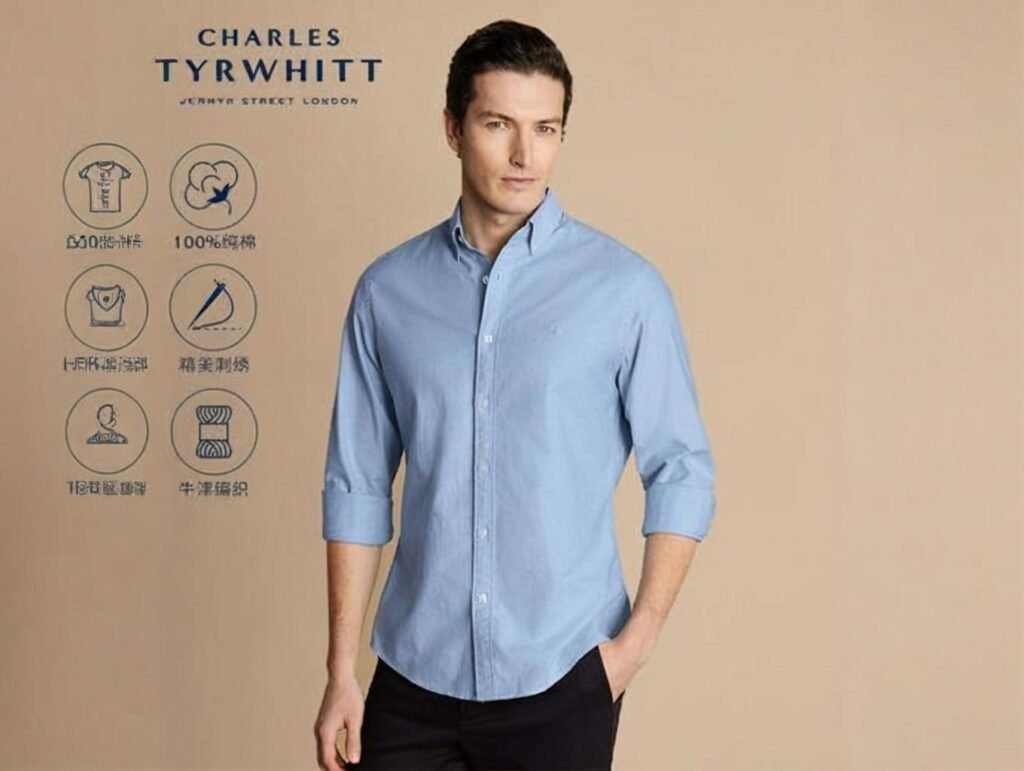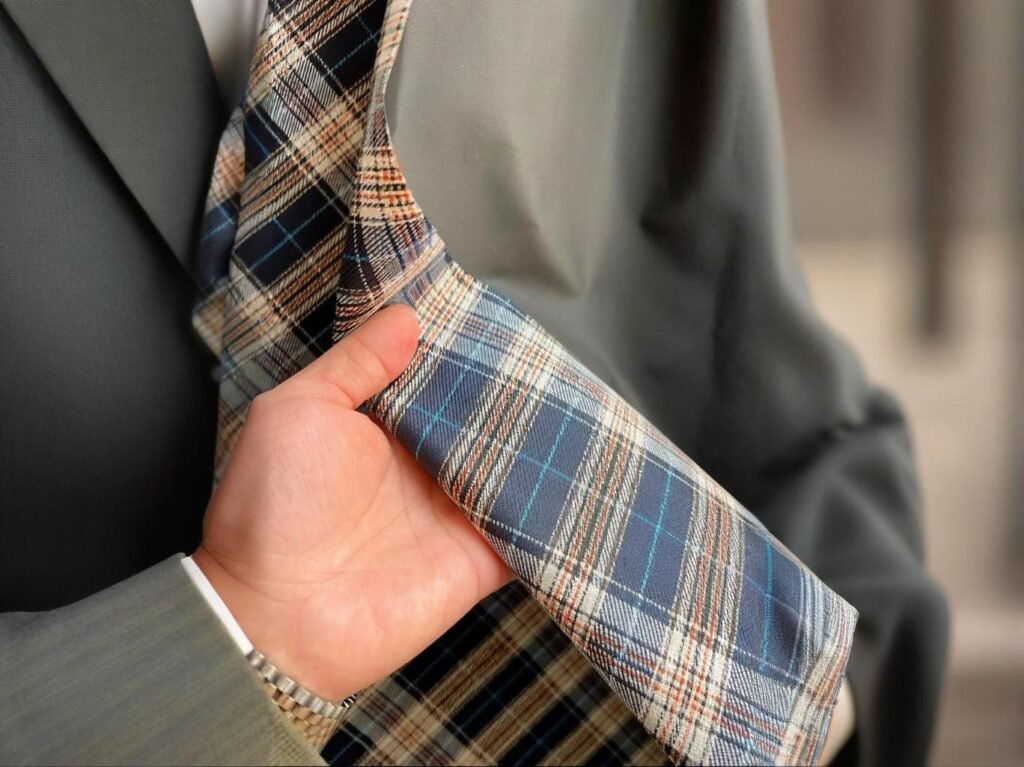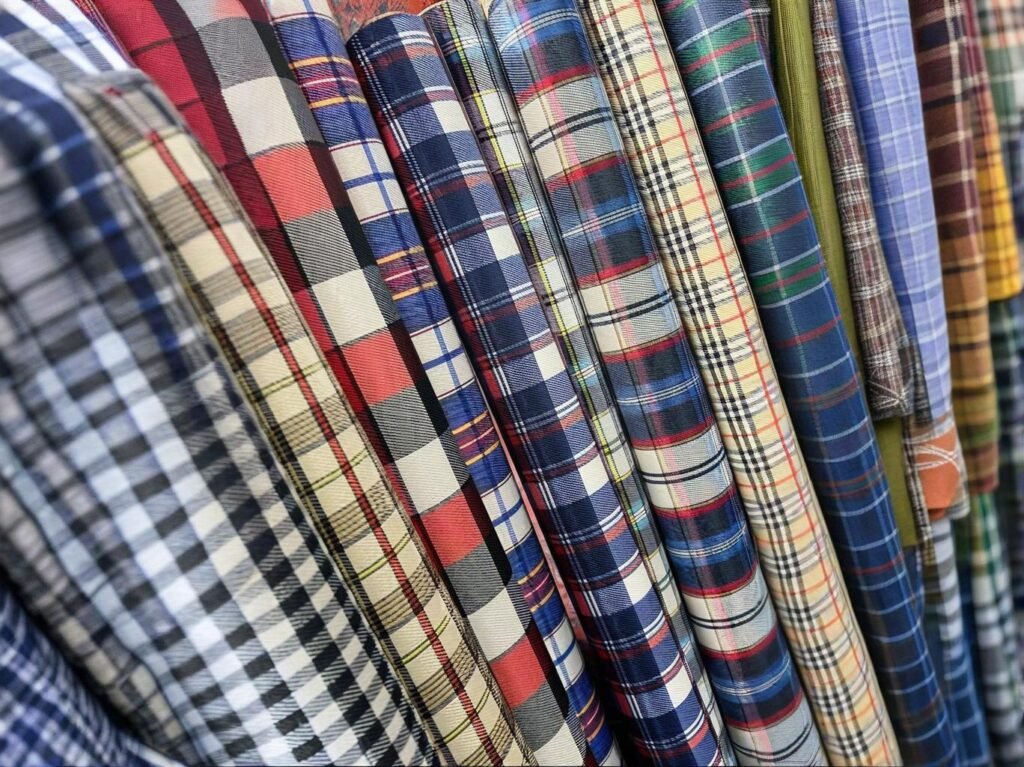
Imagine ordering 1,000 Oxford shirts for a hotel in Europe, only to find that half of your team can’t button the collar. Sizing isn’t just a numbers game—it’s a global challenge. While Oxford shirts are a staple in uniforms and professional wardrobes worldwide, the definition of “Large” in the U.S. can be a completely different fit in Japan or Germany.
Here’s the core issue: there’s no single international standard. Each region—North America, Europe, the UK, and Asia—uses different reference points for neck size, chest width, sleeve length, and even the fit type (slim, regular, classic). These inconsistencies can cause serious headaches for B2B buyers trying to order bulk uniforms or private-label shirts across multiple markets.
So, how can B2B buyers navigate this global tangle of numbers and fit expectations? We’ll break down the most used sizing systems, how they compare, and how to source smarter—without expensive returns or remakes. Stick around as we unravel these sizing codes with real charts, regional insights, and manufacturer-backed sourcing tips.
What Are the Most Common Oxford Shirt Sizing Systems Used Worldwide?
The most common Oxford shirt sizing systems globally include Alpha sizing (S, M, L, etc.), Numeric sizing (14.5, 15, 16 for neck), and EU-based chest sizes (38, 40, 42). Each region applies different fit models based on average population body types.
In B2B textile manufacturing, understanding these systems is crucial when ordering thousands of units for hotels, airlines, retail, or hospitality brands. Sizing errors can lead to high return rates, waste, and customer dissatisfaction.
Major Global Sizing Frameworks Compared
1. Alpha vs Numeric Systems
| Sizing System | Common Usage Areas | Example Size | Basis |
|---|---|---|---|
| Alpha (S, M, L) | USA, Australia, Global | Medium | General body type |
| Numeric (Neck) | USA, UK | 15.5 (inches) | Collar circumference |
| EU Chest Size | EU, Germany, France | 40, 42 | Chest in cm |
| Asian Sizes | China, Japan, Korea | 170/88A | Height/Bust CM |
- Alpha sizes are broad and require additional fit data (slim/classic).
- Numeric sizes offer more precision but may confuse international buyers.
- EU sizes are often more fitted and tailored for slimmer frames.
- Asian sizing typically runs 1–2 sizes smaller than US or EU equivalents.
2. Industry Insight: Why Does This Matter?
A garment supplier in Shanghai producing for a U.S. hospitality chain reported that nearly 18% of shirts were returned or altered in their first international order because they used U.S. sizing to supply a team in South Korea. After adjusting the size chart using real body measurement data, the issue dropped to below 2%.
3. Key Takeaway
There’s no one-size-fits-all system. Sourcing for a global team means understanding which sizing logic your target market expects—and planning conversions ahead of production.
How Do U.S., U.K., EU, and Asian Shirt Sizes Differ in Measurement Standards?

U.S. shirt sizes prioritize neck and sleeve length, U.K. sizes are similar but follow slightly different measurement rules, EU sizes focus on chest width in centimeters, and Asian sizes often include body height, bust, and body shape codes.
Let’s break it down visually and functionally so your team never guesses again.
Side-by-Side Comparison Table
| Region | Sizing Format | Example | Core Focus | Fit Style |
|---|---|---|---|---|
| U.S. | Neck + Sleeve | 15.5 / 32–33 | Collar Fit | Roomier Cut |
| U.K. | Neck | 15.5 | Collar Fit | More tailored |
| EU | Chest in CM | 40 | Chest Circumference | Slimmer Torso |
| Asia | Height/Bust/Shape | 170/88A | Overall Frame | Narrow shoulders |
1. Understanding the Asian Format: What Does 170/88A Mean?
- 170 = height in cm
- 88 = chest circumference in cm
- A = body shape code (A = regular, B = slightly wider, Y = slimmer)
So, 170/88A would suit a person 5’7” tall with a 34–35″ chest, average build.
2. Fit Style Variations: Why It Gets Tricky
The same neck size in the U.S. and EU could result in two entirely different body fits:
- US 15.5” neck shirt might have a chest of 112 cm
- EU size 40 may fit a chest of only 100–104 cm
Sourcing Tip: Always ask your supplier not just for the “size chart” but for a full body measurement reference guide with actual flat garment measurements.
3. Visual Reference Table: Size Cross-Mapping
| U.S. Size | UK Size | EU Size | Asia (Approx.) |
|---|---|---|---|
| 14.5 | 14.5 | 37–38 | 165/84A |
| 15 | 15 | 39 | 170/88A |
| 15.5 | 15.5 | 40–41 | 175/92A |
| 16 | 16 | 42–43 | 180/96A |
Which Body Measurements Are Critical When Sizing Oxford Shirts?
The most critical body measurements when sizing Oxford shirts include neck circumference, chest width, sleeve length, shoulder width, and overall shirt length. For tailored fits, waist and armhole measurements also play an essential role.
When sourcing for uniform programs or premium private-label shirts, these measurements dictate whether your shirts fit like a glove or get returned in bulk. Unlike T-shirts, Oxford shirts are structured garments—fit precision matters.
Key Measurements and What They Impact
1. Core Measurements & Their Importance
| Measurement | Description | Affects Fit For |
|---|---|---|
| Neck Circumference | Measured at the base of the neck | Collar fit, comfort when buttoned |
| Chest Width | Widest part around the chest | Overall torso space, movement |
| Sleeve Length | From shoulder to wrist (or neck to wrist) | Arm comfort, appearance when worn |
| Shoulder Width | Seam to seam across the upper back | Shoulder mobility, structure |
| Shirt Length | Bottom of collar to hem | Tuck-in ability, posture fit |
| Waist (optional) | Narrowest point of the torso | Slim/regular fit shaping |
2. How These Measurements Interact
A shirt may fit well in the chest but be too tight in the neck or too short in the sleeve. For example:
- A 15.5″ neck size may suit multiple body types depending on torso width.
- In slim fits, even a half-inch deviation in shoulder width can restrict movement.
Tailoring Insight: A 1 cm difference in sleeve length or chest width can dramatically impact comfort—especially during formal events or extended shifts in hotel and corporate environments.
3. Visual Guide: Oxford Shirt Measurement Points
| Point of Measurement | Measuring Guide Tip |
|---|---|
| Neck | Around base of neck, 1 finger room |
| Chest | Armpit to armpit x2 |
| Shoulders | Back seam to seam |
| Sleeve | Shoulder seam to end of cuff |
| Shirt length | Collar seam to bottom hem |
Is There an International Standard for Unifying Shirt Sizing Across Markets?

There is no single universal shirt sizing standard, but efforts like ISO 8559-2 and ASTM D5585 aim to standardize sizing across global markets. However, adoption varies by manufacturer and region.
Many B2B buyers expect a unified sizing reference when placing bulk orders—but reality falls short. The fashion and textile industries have attempted harmonization, yet most brands and suppliers still rely on their own size charts based on historical customer data or domestic grading systems.
Attempts Toward Sizing Standardization
1. What Is ISO 8559-2?
- Developed by the International Organization for Standardization
- Sets guidelines for primary body dimensions relevant to clothing
- Promotes measurement-based size labels (e.g., 100-96-104 = chest-waist-hip)
Drawback? It’s rarely used in shirt labeling for commercial buyers.
2. U.S. ASTM D5585
- ASTM’s guide for adult men’s and women’s shirt sizing
- Defines typical body measurements for alpha and numeric sizes
- Primarily adopted in U.S.-based private label and uniform production
3. Why Standardization Fails in Real-World Sourcing
| Challenge | Impact for B2B Buyers |
|---|---|
| Different sizing philosophies | EU prefers chest size, US favors neck |
| Varying fit expectations | Asian markets expect slimmer cuts |
| Supplier-led grading patterns | Custom patterns override ISO logic |
4. What You Can Do as a Buyer
- Ask for flat garment measurements instead of just size labels
- Request your supplier to grade patterns based on your target market
- Consider offering a dual-label system (e.g., US M / EU 40 / 170/88A)
SzoneierFabrics supports clients by customizing size grading to their end market, based on over 10 years of global B2B garment production experience.
How Do You Convert Oxford Shirt Sizes Between Global Regions Accurately?
To convert Oxford shirt sizes accurately between the U.S., U.K., EU, and Asian systems, use detailed body measurement charts as your baseline—not size labels. Custom size conversion charts from suppliers are essential.
Size labels like “M” or “16” can be misleading across borders. An American Medium may equal a Japanese Large or a European size 41. For international B2B orders, these misalignments can lead to mass returns or poor brand perception.
Conversion Tools and Techniques
1. Use Body Measurements as the Anchor
Start with core body measurements:
- Neck circumference
- Chest girth
- Height (especially for Asian sizing)
- Sleeve and shoulder dimensions
Only then apply conversion tables. Don’t guess.
2. Universal Size Conversion Chart (Approximate)
| U.S. Size (Neck) | EU (Chest CM) | UK Size | Asia (Height/Chest) |
|---|---|---|---|
| 14.5 | 37–38 | 14.5 | 165/84A |
| 15 | 39 | 15 | 170/88A |
| 15.5 | 40–41 | 15.5 | 175/92A |
| 16 | 42–43 | 16 | 180/96A |
| 16.5 | 44–45 | 16.5 | 185/100A |
| 17 | 46–47 | 17 | 190/104A |
3. Beware of Fit Adjustments (Slim vs Regular)
Size conversion must also account for fit types:
- A U.S. Medium Regular Fit ≠ EU Medium Slim Fit
- Asian sizing assumes narrower shoulders and shorter torsos
Work with your manufacturer (like Szoneier) to develop a dual-tagged label (e.g., M / 40 / 170/88A) that helps reduce return risk in cross-market retail.
What Sizing Challenges Do B2B Buyers Face When Ordering in Bulk for Different Countries?

The biggest sizing challenges for B2B buyers include inconsistent size interpretation, lack of measurement transparency, regional body shape differences, and limited MOQ flexibility for split sizing in small batches.
For buyers managing uniforms across multiple hotel locations or brands operating in multiple markets (e.g., EU + Japan + USA), even a 1-size miscalculation across thousands of shirts can cost tens of thousands of dollars in rework or returns.
Common Pitfalls and How to Avoid Them
1. Inconsistent Terminology
- “M” in the U.S. ≠ “M” in Asia
- Some factories label by finished garment dimensions; others by intended body fit
✅ Solution: Always clarify if sizes refer to body measurements or garment dimensions.
2. Limited Access to Size Charts
Many suppliers send vague size ranges or outdated templates. This leads to unclear communication, especially for newer buyers.
✅ Solution: Request a full size spec sheet and finished garment dimension table.
3. MOQ Limits on Mixed Sizing
Suppliers often require minimums per size, not just per color or style. This creates problems for buyers needing inclusive sizing (e.g., XS to 5XL).
✅ Solution: Work with flexible factories (like SzoneierFabrics) that offer low-MOQ custom runs or graded-size sampling.
4. Body Shape Differences by Region
For instance, a “Large” Oxford shirt designed for U.S. buyers may have:
- Broader shoulders
- Longer sleeve length
- Wider torso fit
Whereas a “Large” for the Japanese market:
- Shorter body length
- Narrower shoulders
- Slimmer armholes
✅ Solution: Create regional fit profiles during tech pack development.
A European spa chain sourcing from a Chinese factory adjusted their U.K. shirt sizing after noticing return rates over 20%. With new size grading based on UK-Asian hybrids, their complaint rate dropped below 2% in the next order cycle.
Are Stretch Fabrics and Fit Types Changing How Oxford Shirts Are Sized?
Yes. Stretch fabrics and new fit categories—such as slim, tailored, athletic, and relaxed—are redefining Oxford shirt sizing, making traditional size labels less reliable for bulk sourcing.
The integration of spandex or elastane into classic cotton blends has increased flexibility in sizing. A size M slim-fit stretch Oxford shirt may fit a broader range of body types compared to its 100% cotton counterpart. This trend is especially useful for uniforms, where comfort across long shifts matters as much as appearance.
How Fabric and Fit Type Influence Sizing
1. Popular Fit Types Explained
| Fit Type | Target Body Type | Key Features |
|---|---|---|
| Classic Fit | Broad or general fit | Loose across chest and waist |
| Slim Fit | Slender builds | Tapered waist, narrow shoulders |
| Tailored Fit | Athletic builds | More room in chest, taper at waist |
| Relaxed Fit | All-day wear | Extra room throughout |
Hotels in Europe often request tailored fit for a premium look, while U.S. airlines prefer relaxed fit for flight attendants due to comfort during long hours.
2. Stretch vs Non-Stretch Oxford Fabric
| Fabric Type | Pros | Sizing Impact |
|---|---|---|
| 100% Cotton | Crisp, breathable, traditional feel | Strict sizing; less forgiveness |
| Cotton-Spandex | Flexible, comfort-driven | Accommodates slight size discrepancies |
When ordering stretch Oxford shirts in bulk, you can consolidate your sizing (e.g., skip in-between sizes) because the fabric adapts better to different body shapes.
3. Why Fit Type Should Be Decided First
Before choosing sizes, you should define your fit philosophy:
- Is the shirt part of a luxury brand or fast-fashion line?
- Will the wearer tuck it in? Work in it all day? Attend formal meetings?
This will shape your pattern grading, sleeve shaping, and length decisions.
How Can Buyers Customize Size Charts When Sourcing Oxford Shirts from China?

Buyers can customize size charts by providing detailed body measurement targets, specifying fit types, and collaborating with manufacturers on tech packs, sample grading, and dual sizing systems (e.g., US + EU).
At SzoneierFabrics, many clients work with us to adjust sizing to their regional markets or end users. Whether you’re supplying Oxford shirts for luxury hotel chains in Dubai or school uniforms in the UK, our customization approach ensures consistency and satisfaction.
5 Steps to Custom Sizing Success
1. Start with Target Market Analysis
- Determine whether your end users are from the U.S., EU, Asia, etc.
- Use population data to determine body type norms
2. Create a Custom Fit Guide
- Define fit type: classic, slim, etc.
- Provide preferred garment ease (inches/cm added for comfort)
3. Submit Full Size Specs or Measurement Sheet
- Provide dimensions for chest, sleeve, shoulder, length
- Use your own brand’s size table or adapt Szoneier’s template
4. Request Sample Set
- Ask for 2–3 sizes to test on local staff or customers
- Provide feedback on sleeve tightness, collar movement, shoulder room
5. Label With Cross-Market Sizing (Optional)
| Tag Example | Description |
|---|---|
| M / 40 / 170/88A | U.S. / EU / Asia compatibility |
Szoneier can help digitize your tech pack and maintain your custom size chart for reorders, ensuring consistency in every batch.
Sourcing Smart with Confidence
Global sizing for Oxford shirts is more complex than it appears. From neck measurements to fabric elasticity to cultural expectations of fit, there are dozens of factors to align. By understanding international sizing systems, prioritizing real body measurements, and partnering with factories that offer full customization like SzoneierFabrics, you reduce risk, increase customer satisfaction, and protect your brand reputation.
Ready to Customize Oxford Shirts for Your Market?
SzoneierFabrics has helped hundreds of brands and uniform buyers create perfectly fitting Oxford shirts for every global region. Whether you’re supplying staff at luxury resorts or launching your own menswear line, we offer:
- 100% quality assurance
- Custom sizing & labeling
- Fast sampling turnaround
- Low MOQs for testing new markets
- Free design support and size consultation

